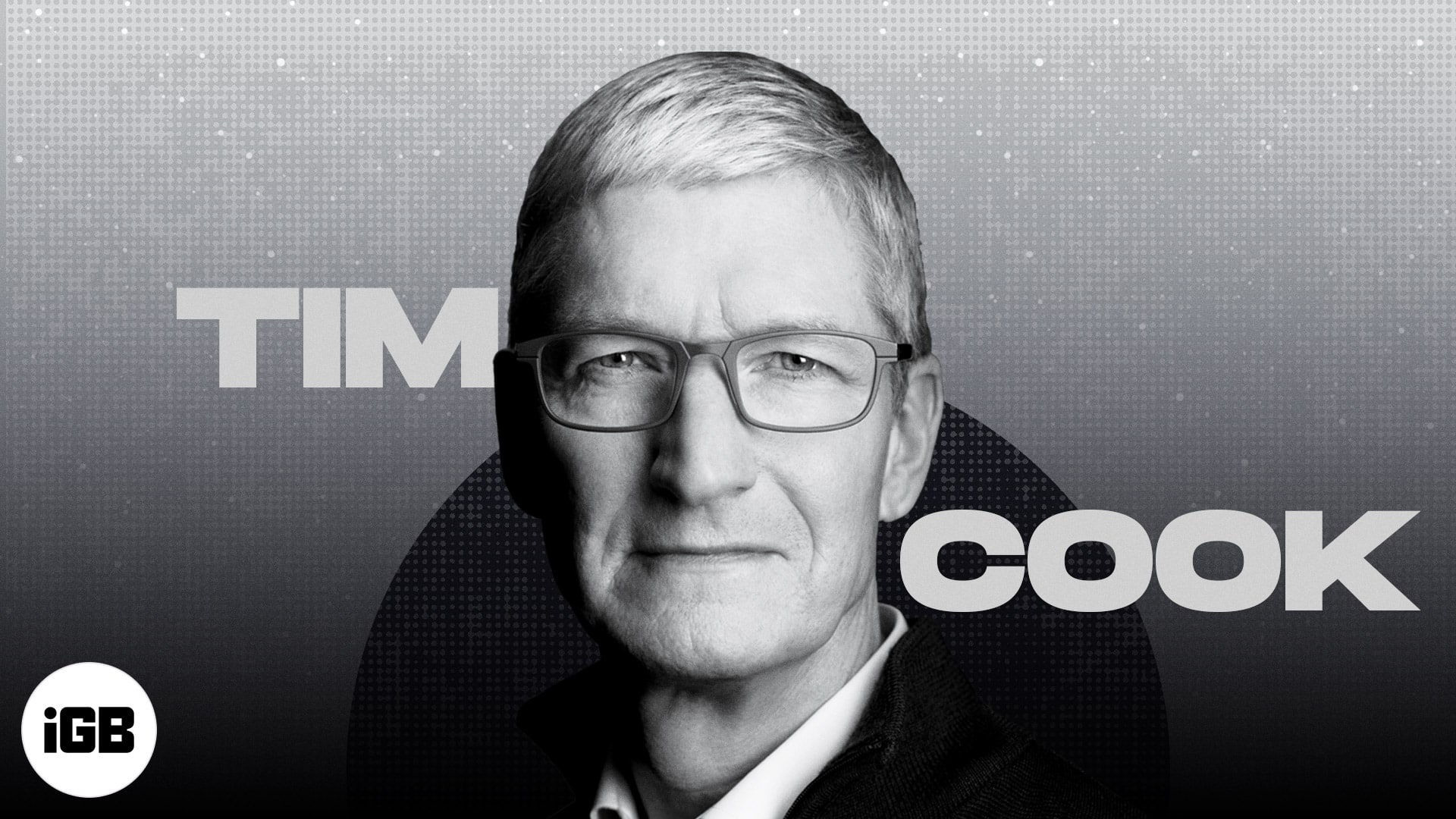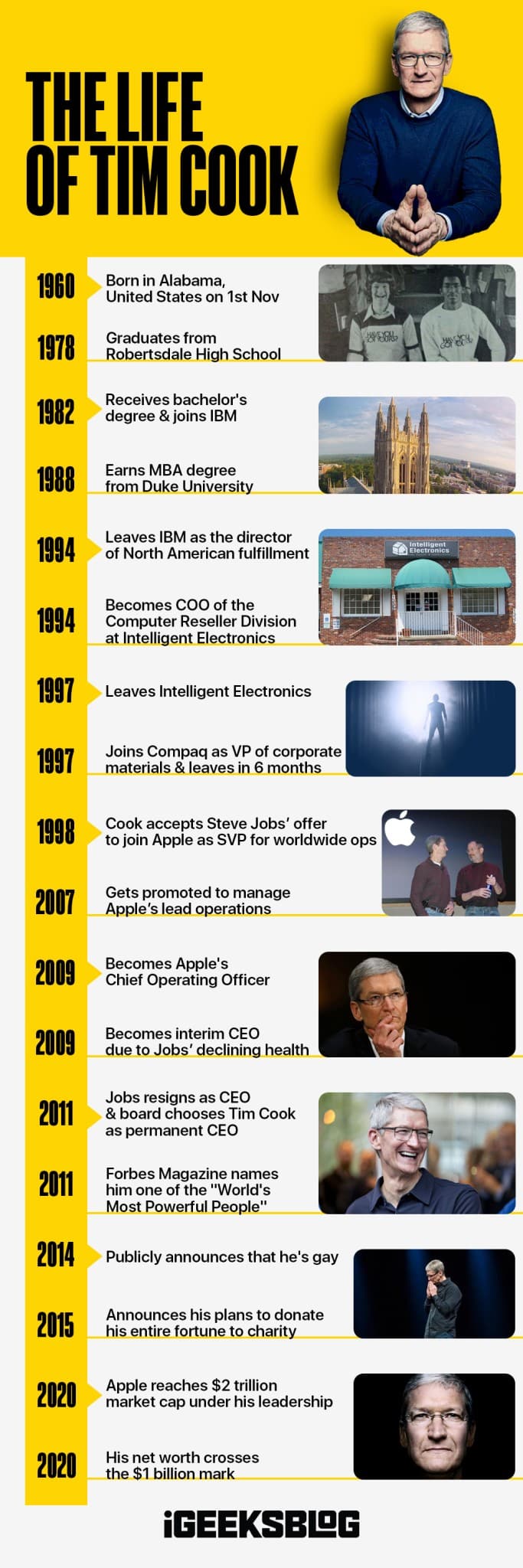From the relatively small town of Robertsdale, Alabama, to heading a 2 trillion dollar tech giant in the heart of Silicon Valley, California, Tim Cook’s biography is one for the history books.

So we thought it would be interesting to take a closer look at his inspiring journey with the help of an infographic. Scroll down to check it out and learn more about the seventh Apple CEO, Tim Cook.
Life and career biography of Tim Cook
Born on November 1, 1960, Timothy Donald Cook graduated from Robertsdale High School in 1978 and went on to earn a Bachelor of Science in industrial engineering from Auburn University in 1982.
He then spent 12 years in IBM’s computer business and pursued a Master of Business Administration (MBA) from the Fuqua School of Business at Duke University. In 1998, Cook met with Steve Jobs, and this led him to join Apple at the age of 37.
The rest, as they say, is history. Here’s a detailed look at the story so far:

Reaching higher: Journey of Tim Cook as Apple CEO
Cook stepped into the role of SVP of Global Operations at Apple in 1998. Eleven years later, in 2009, he took the helm as Chief Operating Officer. Soon after, he became the interim Chief Executive Officer due to the declining health of Steve Jobs.
Eventually, in 2011, Jobs resigned, and the board elected Cook to take over as CEO. That’s a pretty impressive and notable journey, especially considering that he had his reservations about taking the initial job offer at Apple.
During a commencement address at his alma mater Auburn University in 2010, Tim shared that joining Apple had been one of the most significant decisions in his life and not an easy one.
This is because at the time, back in 1998, the company was not doing so well, and its prospects looked bleak. The iPhone, iPad, iPod, and iMac had not yet been developed, and Apple was losing sales.
However, Jobs made such a compelling offer that Cook couldn’t refuse and took the plunge despite already having an adequately successful career. That shows us the power of taking calculated risks and how wonderfully they can pay off in the long run.
Of course, ever since taking the reins of our favorite tech company, Cook has earned a reputation for leading with a vision to take Apple to the pinnacle of success.
Leading from the core: Tim Cook’s leadership style
There is often much discussion pitting Tim Cook vs. Steve Jobs to see who’s the better CEO, but I think they both have their unique visionary styles.
According to the Harvard Business Review, Cook is a multiplier – the kind of leader who can make employees smarter, more innovative, and competent. Thus, Apple’s tremendous growth under his leadership doesn’t come as a surprise.
Many people initially felt that he lacked the bold, authoritative style of Jobs, but Cook played to his strengths as a mild-mannered, charismatic, and thoughtful individual who is skilled at inspiring cooperation among the high-level global talent that Apple attracts.
Further, his personal experiences have equipped him with a diverse mindset. In several interviews, Cook has shared how growing up in Alabama sensitized him to racial and other forms of discrimination in society.
He has therefore prioritized “respect for human dignity” as one of the guiding principles for Apple. He sees Apple not as just a tech company but as one whose primary mission is actually “advancing humanity.”
This is evident in how Apple products and services are often inclusive of the needs of people with disabilities. Now, that is admirable leadership at its best.
Tim Cook – The inspirational leader
Forbes Magazine named Tim Cook one of the most powerful people in the world back in 2011, and it continues to stand true. He has a net worth of over $1 billion and plans to donate most of his fortune to philanthropic activities.
He supports several charities and organizations, including the American Cancer Society, Bloomberg Philanthropies, Gloria Estefan Foundation, PETA, Children’s Hospital Los Angeles, and many more.
All in all, his actions certainly match the wise words he once said – “You want to be the pebble in the pond that creates the ripple for change.”
Read more:

